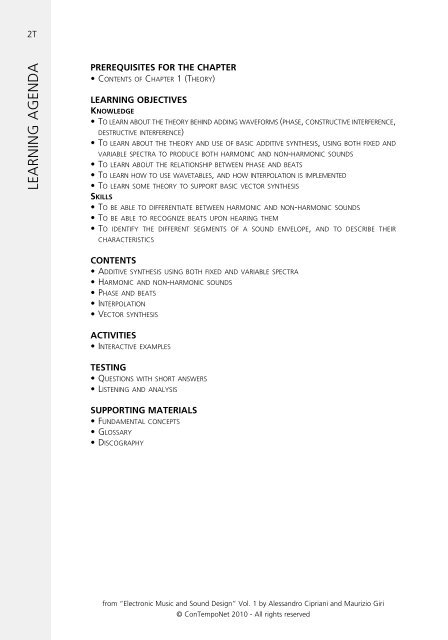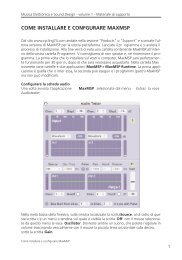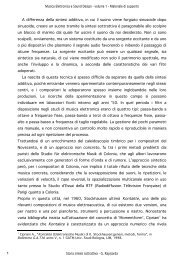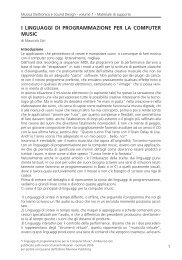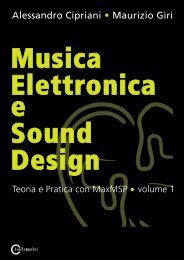programming with max/msp - Virtual Sound
programming with max/msp - Virtual Sound
programming with max/msp - Virtual Sound
Create successful ePaper yourself
Turn your PDF publications into a flip-book with our unique Google optimized e-Paper software.
LEARNING AGENDA 2T<br />
PREREQUISITES FOR THE CHAPTER<br />
• Contents of Chapter 1 (theory)<br />
LEARNING OBJECTIVES<br />
Knowledge<br />
• to learn about the theory behind adding waveforms (phase, ConstruCtive interferenCe,<br />
destruCtive interferenCe)<br />
• to learn about the theory and use of basiC additive synthesis, using both fixed and<br />
variable speCtra to produCe both harmoniC and non-harmoniC sounds<br />
• to learn about the relationship between phase and beats<br />
• to learn how to use wavetables, and how interpolation is implemented<br />
• to learn some theory to support basiC veCtor synthesis<br />
SKillS<br />
• to be able to differentiate between harmoniC and non-harmoniC sounds<br />
• to be able to reCognize beats upon hearing them<br />
• to identify the different segments of a sound envelope, and to desCribe their<br />
CharaCteristiCs<br />
CONTENTS<br />
• additive synthesis using both fixed and variable speCtra<br />
• harmoniC and non-harmoniC sounds<br />
• phase and beats<br />
• interpolation<br />
• veCtor synthesis<br />
ACTIVITIES<br />
• interaCtive examples<br />
TESTING<br />
• Questions <strong>with</strong> short answers<br />
• listening and analysis<br />
SUPPORTING MATERIALS<br />
• fundamental ConCepts<br />
• glossary<br />
• disCography<br />
from “Electronic Music and <strong>Sound</strong> Design” Vol. 1 by Alessandro Cipriani and Maurizio Giri<br />
© ConTempoNet 2010 - All rights reserved


